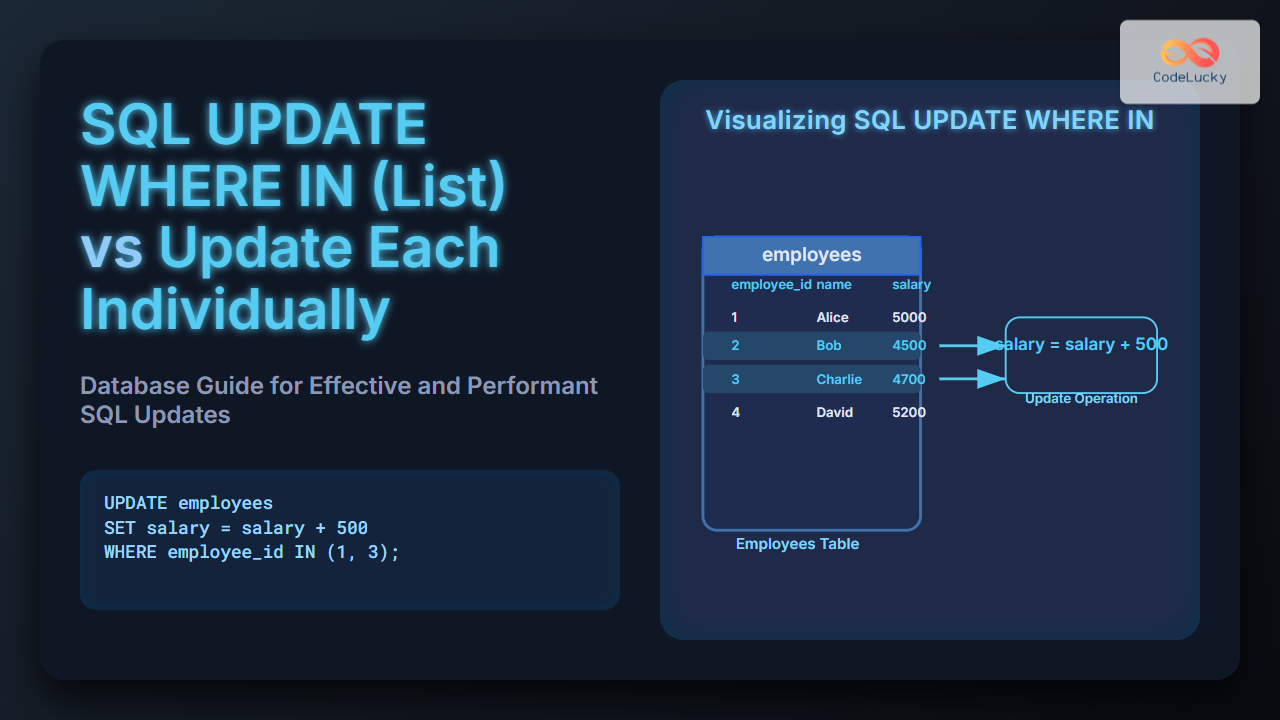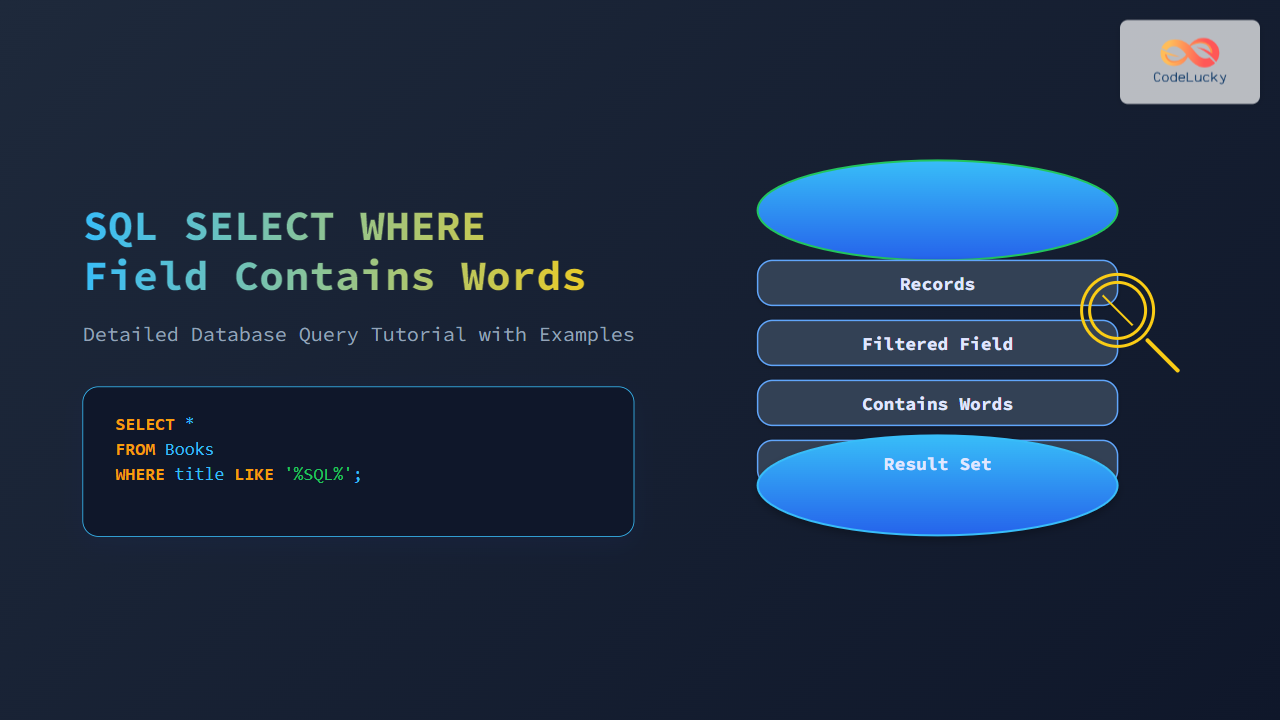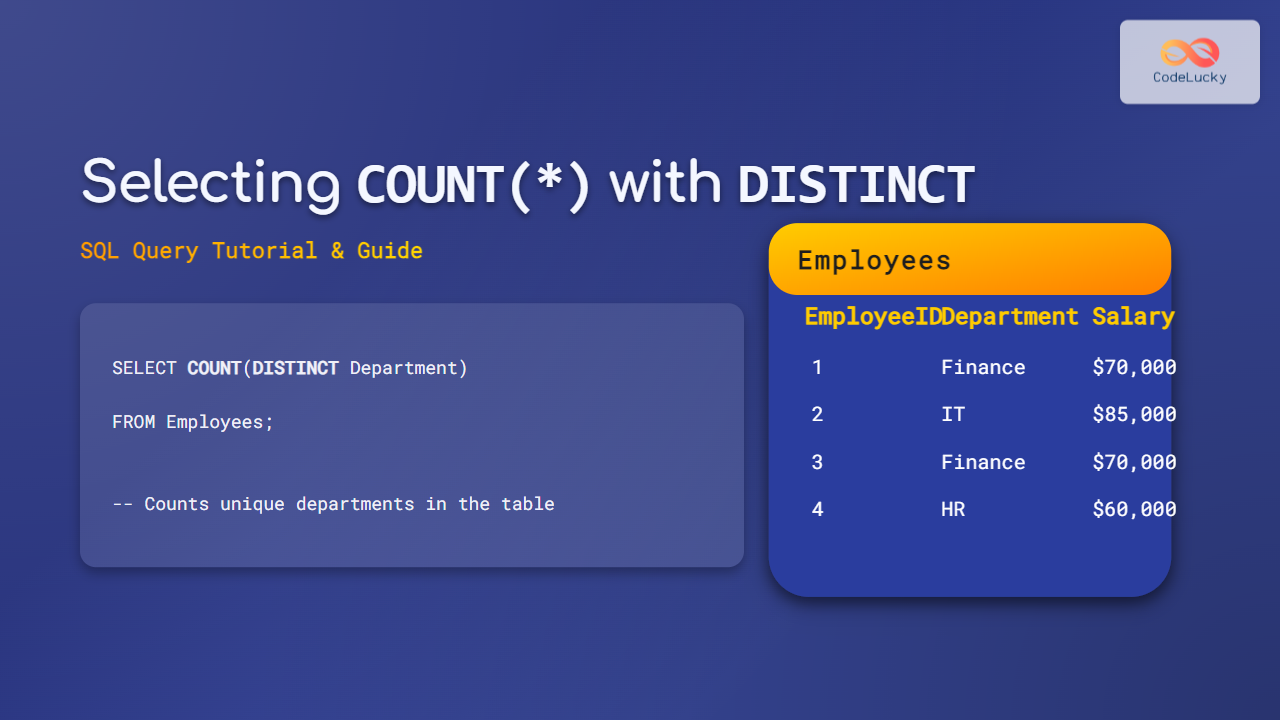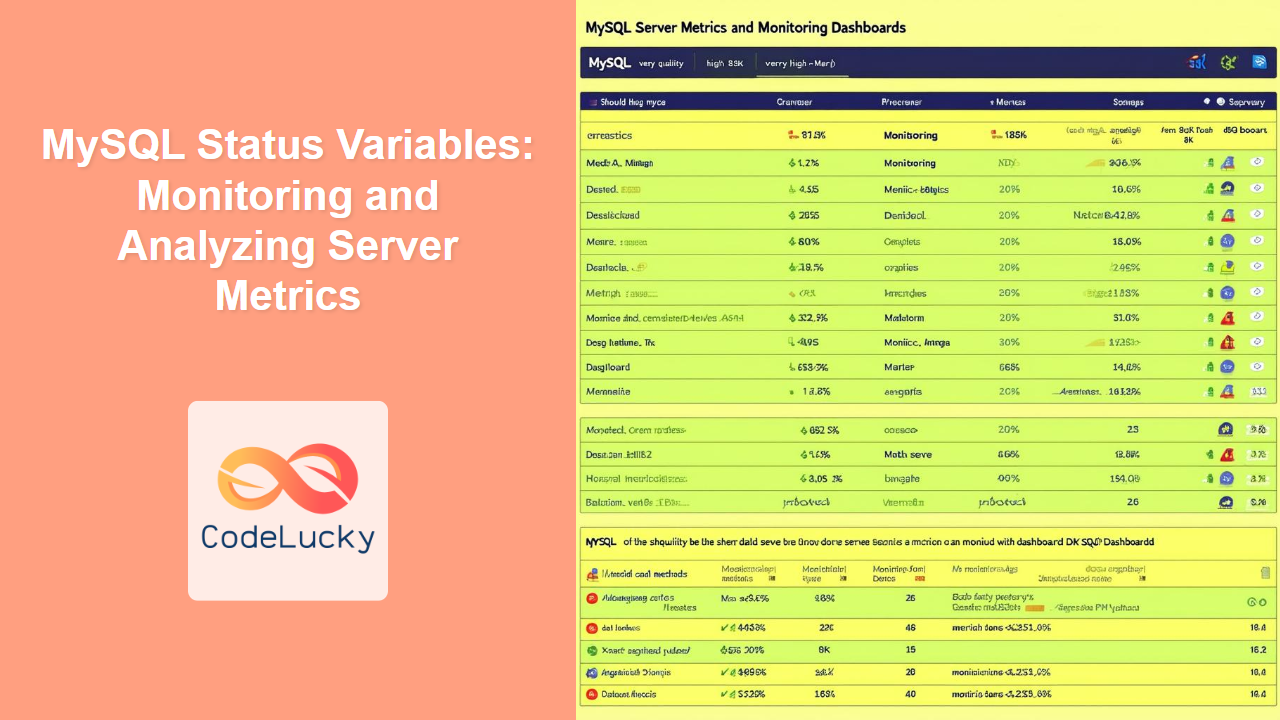Stored procedures are the unsung heroes of database management, offering a powerful way to encapsulate and reuse SQL code. These pre-compiled collections of SQL statements can significantly enhance database performance, improve code organization, and bolster security. In this comprehensive guide, we'll dive deep into the world of SQL stored procedures, exploring their benefits, syntax, and real-world applications.
What Are Stored Procedures?
📦 Stored procedures are named collections of SQL statements that are stored in a database for later execution. Think of them as functions or methods in programming languages, but specifically for databases. They can accept input parameters, perform complex operations, and return results.
Key Benefits of Stored Procedures:
-
Performance Improvement: 🚀 Stored procedures are pre-compiled, which means they execute faster than ad-hoc SQL queries.
-
Code Reusability: ♻️ Write once, use many times. This reduces code duplication and makes maintenance easier.
-
Security Enhancement: 🔒 Stored procedures can be used to implement row-level security and restrict direct table access.
-
Reduced Network Traffic: 📡 Only the procedure call is sent over the network, not the entire SQL code.
-
Modularity: 🧩 Complex operations can be broken down into smaller, manageable units.
Creating a Basic Stored Procedure
Let's start with a simple example. We'll create a stored procedure that retrieves all employees from a specific department.
CREATE PROCEDURE GetEmployeesByDepartment
@DepartmentID INT
AS
BEGIN
SELECT EmployeeID, FirstName, LastName, Email
FROM Employees
WHERE DepartmentID = @DepartmentID
END
In this example:
CREATE PROCEDUREis used to define a new stored procedure.GetEmployeesByDepartmentis the name of our procedure.@DepartmentID INTis an input parameter of type INT.- The
BEGINandENDkeywords encapsulate the procedure's body.
To execute this stored procedure, you would use:
EXEC GetEmployeesByDepartment @DepartmentID = 3
This would return all employees in the department with ID 3.
Adding Complexity: Stored Procedures with Multiple Parameters
Let's create a more complex stored procedure that inserts a new employee into the database:
CREATE PROCEDURE InsertNewEmployee
@FirstName VARCHAR(50),
@LastName VARCHAR(50),
@Email VARCHAR(100),
@DepartmentID INT,
@Salary DECIMAL(10, 2)
AS
BEGIN
INSERT INTO Employees (FirstName, LastName, Email, DepartmentID, Salary)
VALUES (@FirstName, @LastName, @Email, @DepartmentID, @Salary)
SELECT SCOPE_IDENTITY() AS NewEmployeeID
END
This procedure:
- Accepts multiple parameters of different types.
- Inserts a new record into the Employees table.
- Returns the ID of the newly inserted employee using
SCOPE_IDENTITY().
To execute this procedure:
EXEC InsertNewEmployee
@FirstName = 'John',
@LastName = 'Doe',
@Email = 'john.doe@example.com',
@DepartmentID = 2,
@Salary = 50000.00
Using Output Parameters
Output parameters allow stored procedures to return values directly to the calling code. Here's an example that calculates the average salary for a department:
CREATE PROCEDURE CalculateAverageSalary
@DepartmentID INT,
@AverageSalary DECIMAL(10, 2) OUTPUT
AS
BEGIN
SELECT @AverageSalary = AVG(Salary)
FROM Employees
WHERE DepartmentID = @DepartmentID
END
To use this procedure:
DECLARE @Result DECIMAL(10, 2)
EXEC CalculateAverageSalary @DepartmentID = 3, @AverageSalary = @Result OUTPUT
PRINT 'The average salary is: ' + CAST(@Result AS VARCHAR(20))
Stored Procedures with Conditional Logic
Stored procedures can include complex logic, including IF statements and error handling. Here's an example that gives a raise to employees based on their performance:
CREATE PROCEDURE GiveRaise
@EmployeeID INT,
@PerformanceRating INT
AS
BEGIN
DECLARE @CurrentSalary DECIMAL(10, 2)
DECLARE @NewSalary DECIMAL(10, 2)
-- Get current salary
SELECT @CurrentSalary = Salary
FROM Employees
WHERE EmployeeID = @EmployeeID
-- Determine raise percentage based on performance
IF @PerformanceRating = 5
SET @NewSalary = @CurrentSalary * 1.10 -- 10% raise
ELSE IF @PerformanceRating = 4
SET @NewSalary = @CurrentSalary * 1.07 -- 7% raise
ELSE IF @PerformanceRating = 3
SET @NewSalary = @CurrentSalary * 1.05 -- 5% raise
ELSE
SET @NewSalary = @CurrentSalary -- No raise
-- Update employee salary
UPDATE Employees
SET Salary = @NewSalary
WHERE EmployeeID = @EmployeeID
-- Return new salary
SELECT @NewSalary AS UpdatedSalary
END
To use this procedure:
EXEC GiveRaise @EmployeeID = 101, @PerformanceRating = 4
Error Handling in Stored Procedures
Proper error handling is crucial in stored procedures. Here's an example that demonstrates error handling:
CREATE PROCEDURE SafeDeleteEmployee
@EmployeeID INT
AS
BEGIN
BEGIN TRY
BEGIN TRANSACTION
-- Check if employee exists
IF NOT EXISTS (SELECT 1 FROM Employees WHERE EmployeeID = @EmployeeID)
BEGIN
THROW 50001, 'Employee not found.', 1
END
-- Delete employee
DELETE FROM Employees WHERE EmployeeID = @EmployeeID
COMMIT TRANSACTION
SELECT 'Employee deleted successfully.' AS Result
END TRY
BEGIN CATCH
IF @@TRANCOUNT > 0
ROLLBACK TRANSACTION
DECLARE @ErrorMessage NVARCHAR(4000) = ERROR_MESSAGE()
DECLARE @ErrorSeverity INT = ERROR_SEVERITY()
DECLARE @ErrorState INT = ERROR_STATE()
RAISERROR(@ErrorMessage, @ErrorSeverity, @ErrorState)
END CATCH
END
This procedure:
- Uses a transaction to ensure data integrity.
- Checks if the employee exists before attempting to delete.
- Handles errors using TRY…CATCH blocks.
- Rolls back the transaction if an error occurs.
Stored Procedures vs. User-Defined Functions
While stored procedures and user-defined functions (UDFs) are both database objects that encapsulate reusable code, they have some key differences:
-
Return Values:
- Stored Procedures can return multiple result sets and output parameters.
- UDFs must return a single value or table.
-
Usage in Queries:
- Stored Procedures are called independently.
- UDFs can be used within SELECT statements.
-
Transactions:
- Stored Procedures can contain transactions.
- UDFs cannot contain transactions.
-
Side Effects:
- Stored Procedures can modify database state (INSERT, UPDATE, DELETE).
- UDFs should not have side effects (they should be deterministic).
Here's a quick example of a UDF for comparison:
CREATE FUNCTION CalculateAge
(
@BirthDate DATE
)
RETURNS INT
AS
BEGIN
RETURN DATEDIFF(YEAR, @BirthDate, GETDATE())
END
This function can be used in a query like this:
SELECT EmployeeID, FirstName, LastName, dbo.CalculateAge(BirthDate) AS Age
FROM Employees
Best Practices for Stored Procedures
-
Use Meaningful Names: 📝 Choose clear, descriptive names for your stored procedures.
-
Comment Your Code: 💬 Include comments to explain complex logic or the purpose of the procedure.
-
Parameterize Inputs: 🔢 Use parameters instead of hard-coding values for flexibility and security.
-
Handle Errors: ⚠️ Implement proper error handling to make troubleshooting easier.
-
Avoid Cursors When Possible: 🔄 Cursors can be performance-intensive. Use set-based operations when possible.
-
Grant Minimum Necessary Permissions: 🔐 Follow the principle of least privilege when granting execute permissions.
-
Version Control: 📚 Keep track of changes to your stored procedures over time.
Advanced Topic: Dynamic SQL in Stored Procedures
Dynamic SQL allows you to build and execute SQL statements dynamically at runtime. While powerful, it should be used cautiously due to potential security risks. Here's an example of a stored procedure using dynamic SQL:
CREATE PROCEDURE DynamicSearch
@TableName NVARCHAR(128),
@SearchColumn NVARCHAR(128),
@SearchTerm NVARCHAR(100)
AS
BEGIN
DECLARE @SQL NVARCHAR(MAX)
SET @SQL = N'SELECT * FROM ' + QUOTENAME(@TableName) +
N' WHERE ' + QUOTENAME(@SearchColumn) +
N' LIKE @SearchTerm'
EXEC sp_executesql @SQL,
N'@SearchTerm NVARCHAR(100)',
@SearchTerm = '%' + @SearchTerm + '%'
END
This procedure allows searching any table and column dynamically. To use it:
EXEC DynamicSearch 'Employees', 'LastName', 'Smith'
⚠️ Security Note: Always validate and sanitize inputs when using dynamic SQL to prevent SQL injection attacks.
Conclusion
Stored procedures are a powerful feature in SQL databases, offering improved performance, better security, and enhanced code organization. By encapsulating complex logic into reusable units, they allow developers to write more efficient and maintainable database code.
From simple data retrieval to complex business logic implementation, stored procedures can handle a wide range of database operations. As you continue to work with databases, mastering stored procedures will undoubtedly make you a more effective and efficient SQL developer.
Remember to follow best practices, handle errors gracefully, and always consider security implications, especially when working with dynamic SQL. With these tools and knowledge at your disposal, you're well-equipped to tackle complex database challenges and create robust, efficient database solutions.
Happy coding! 🚀👨💻👩💻
- What Are Stored Procedures?
- Creating a Basic Stored Procedure
- Adding Complexity: Stored Procedures with Multiple Parameters
- Using Output Parameters
- Stored Procedures with Conditional Logic
- Error Handling in Stored Procedures
- Stored Procedures vs. User-Defined Functions
- Best Practices for Stored Procedures
- Advanced Topic: Dynamic SQL in Stored Procedures
- Conclusion



















